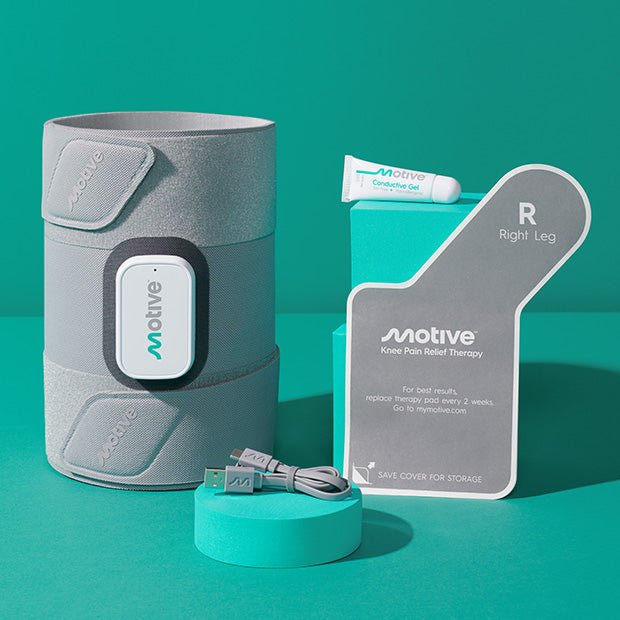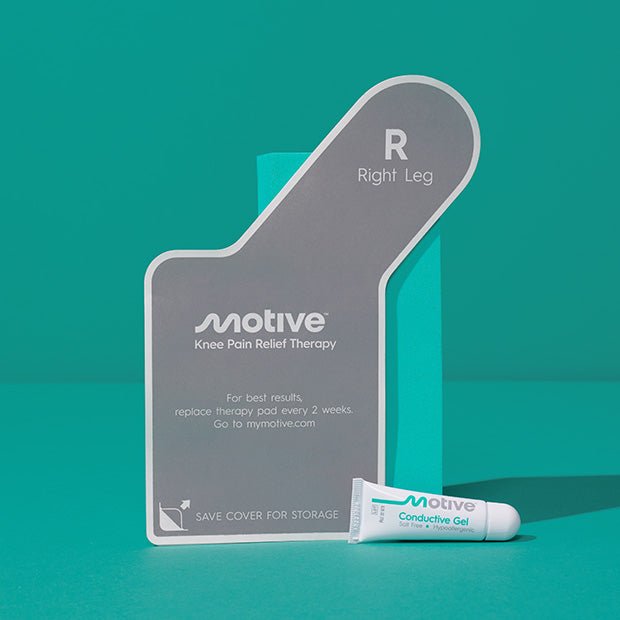
For runners, knee pain, particularly runner's knee (patellofemoral pain syndrome or PFPS), is a prevalent issue that can significantly impact performance and enjoyment of running. This discomfort often stems from overuse injuries, affecting the kneecap (patella) and surrounding area, leading to pain at the front of the knee. Studies show that running is a high-impact exercise, with knee pain affecting up to 65% of runners annually.
This article targets runners seeking at-home relief and delves into strategies to manage and prevent knee pain while offering a roadmap to pain relief.
Understanding Knee Pain in Runners
Common knee problems among runners, such as runner's knee, IT band syndrome (ITBS), and patellar tendinitis, originate from the stress placed on the knee joint during running. The patella's interaction with the thigh bone (femur), overuse, muscle imbalances, and issues with running form contribute to conditions like PFPS, where pain is felt around the anterior (front) aspect of the knee. Identifying these issues early is key to effective pain management.
Identifying the Source of Your Knee Pain
Runner's knee symptoms include discomfort around the kneecap, especially when bending the knee during activities like running, squatting, or climbing stairs. IT band syndrome presents as pain on the outer knee, exacerbated by running activities due to the ITB's friction over the lateral epicondyle of the femur. Understanding these symptoms, alongside other indicators like swelling or popping sounds, can help pinpoint the specific knee problem, guiding toward appropriate treatment options.
Additionally, ligament injuries, such as sprains of the anterior cruciate ligament (ACL), can occur with sudden changes in direction or speed, contributing to knee instability and pain. Meniscus tears are another concern, often resulting from twisting movements or excessive force through the knee, leading to swelling, stiffness, and difficulty bending the knee. Osgood-Schlatter disease, though more common in adolescent runners, results from stress on the patellar tendon where it attaches to the shinbone, causing pain and swelling below the kneecap.
Essential Tips for Preventing Knee Pain When Running
Adopting proper running form is crucial; maintaining a posture that keeps the shin bone (tibia) and femur aligned reduces stress on the knee. The selection of appropriate running shoes, possibly with orthotics or inserts to correct imbalances, significantly prevents knee pain. A thorough warm-up routine prepares the muscles and joints for the impact of running, aiding in the prevention of running injuries like ACL tears and meniscus issues.
Furthermore, engaging the core and maintaining a slight lean forward from the ankles, not the waist, can help distribute weight more evenly and reduce the load on the knees. Paying attention to stride length and avoiding overstriding can also minimize excessive force on the knee joint with each footfall. Regularly practicing exercises that enhance balance and proprioception, such as single-leg stands or using a balance board, can improve stability and coordination, further protecting the knees from injury during running.
Strengthening and Conditioning Exercises
Building strength in the quadriceps, hamstrings, and calf muscles through exercises like lunges and strengthening routines improves knee stability. It supports the patellar tendon, mitigating the risk of patellar tendinitis and other knee injuries. Flexibility exercises for the thigh muscles and a focus on balancing the strength of opposing muscle groups can prevent the overuse and imbalances that lead to runner's knee and IT band syndrome.
Incorporating plyometric exercises, such as jump squats and box jumps, can also enhance muscular power and resilience, further safeguarding the knee against abrupt stresses that occur while running. Dynamic stretching before a run and static stretching post-run can significantly increase the flexibility of the thigh and calf muscles, ensuring a greater range of motion and less tightness around the knee. Additionally, using foam rollers on the quadriceps, hamstrings, and IT band can help in releasing muscle tension and breaking up fascial adhesions, contributing to improved muscle function and reduced risk of injury.
At-Home Remedies for Immediate Knee Pain Relief
The R.I.C.E. method offers immediate relief for acute knee pain, with over-the-counter anti-inflammatory medications like ibuprofen and naproxen providing pain relief. For persistent issues, consulting a healthcare provider or physical therapist can lead to tailored treatment options, including physical therapy exercises, knee braces for support, and advice on using orthotics to correct underlying biomechanical issues.
Incorporating Motive into Your Running Regimen
Motive Knee presents a solution for runners with knee pain, offering exercises that target the specific needs of those suffering from conditions like runner's knee and IT band syndrome. By focusing on strengthening and protecting the knee, Motive Knee aids runners in managing pain and enhancing their running form for improved performance and injury prevention.
Knowing When to Seek Professional Help
Signs indicating the need for a professional evaluation include persistent joint pain, inability to bear weight or significant swelling around the knee. Orthopedic surgeons and sports medicine specialists can provide comprehensive assessments, including X-rays, to diagnose conditions like meniscal tears or ligament injuries, offering advanced treatment options beyond at-home care.
Take Strides Towards Pain Relief with Motive
By understanding the mechanics behind knee pain in runners and adopting preventive measures like proper running form, appropriate footwear, and targeted exercises, runners can effectively manage and prevent knee discomfort.
Motive’s muscle-strengthening technology to relieve knee pain serves as a supportive tool in this journey, complementing professional healthcare advice and physical therapy efforts to ensure runners can enjoy their sport without the setback of knee pain.
Embrace these strategies and consider incorporating Motive therapy into your regimen to bolster your knee health, paving the way for pain relief and optimal performance on the track or trail.




